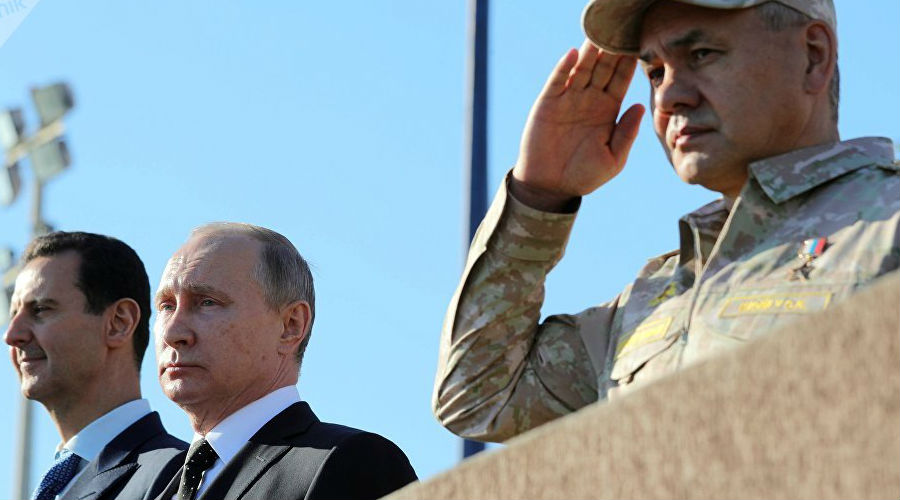The attacks which targeted the Russian Hmeimim air base and the Tartus naval base in Syria on December 31, 2017 and January 6, 2018 marked a new transformation in the ongoing military conflict in Syria. Although, Russia confirmed the attacks did in fact happen, it insisted that it has been capable of thwarting them. Meanwhile, some reports said the attacks resulted in material and human losses. This cannot be separated from some terrorist and armed organizations’ attempt to respond to Russian claims that it defeated terrorism in Syria, as reflected in Putin's statements while visiting the Hmeimim air base with Syrian President Bashar al-Assad on December 11, 2017.
Several significances
The significances of these two attacks are linked to terrorist and armed organizations’ reactions towards Russian military presence in Syria. The most important ones are:
1. Qualitative leap: When looking at the pattern of the attacks, there are differences. In the first one, a mortar was used while in the second that was more dangerous and professional, drones were used. These drones were made of materials that are difficult to detect such as wood, cork and plastic, which can be loaded with locally-manufactured bombs. According to the official Russian statement, 13 of these drones were directed and launched accurately.
2. Defensive gaps: An 82-mm mortar was used in the first attack. Several parties said the attack was carried out from a maximum distance of 6 km or an average of 3 km. This means that the base’s perimeter does not have a solid air cover, thus it is easy to infiltrate the area although there is a Pantsir-S1 system. This system is capable of destroying 12 targets at the same time from a distance of 15 kilometers and targeting missiles on low altitudes, as low as 2 km. This means there is a defensive gap when deterring at short and low-altitude ranges. The Russian defense system was thus not prepared for this kind of attack, unlike what past Russian reports claimed about their defense system being capable of intercepting missiles such as the American anti-tank missile TOW, man-portable air-defense missiles and local missiles including Katyusha which can be fired from a distance of 20 km.
The second attack, which was carried out using drones represents a breakthrough that may have led to military losses which cannot be ignored. It’s difficult to count losses especially that Russian official reports confirmed they intercepted these missiles via their defense system and jammers. This is not compatible with the data available on the two attacks, especially considering how easy it is to launch these drones and load them with explosives. It is also possible for these drones to launch missiles from longer distances, between 50 and 100 km. This raises the possibility of expanding their use and poses challenges to Russian defenses. Several Russian institutions have actually voiced the importance of reviewing the defense system in the perimeter of Russia’s military bases in Syria.
3. Obstructing Russian influence: Perhaps it’s possible to conclude that terrorist and armed organizations’ qualitative attacks is sending Russia messages that its military presence in Syria will encounter several obstacles and that the war is not over yet despite the recent political developments related to national dialogue and moving the negotiations from Geneva to Sochi. These terrorist organizations had not accepted these developments as it corresponds to Russian interests and policy in the first place.
Different scenarios
What’s interesting within this context is that it’s still not clear who is responsible for this new pattern of attacks. Terrorist organizations have not yet declared their responsibility while Russia has not yet accused any party. There are several scenarios to explain this context:
1. Russian reaction: Perhaps the party behind the attack does not want to declare its responsibility because it is worried of Russia’s reaction. Moscow may respond to these attacks by violently striking the responsible organization, consequently affecting its internal coherence. The latter’s influence and capability to stay in their strongholds may thus decline.
2. Change in the opposition’s tactics: According to statements issued by different Syrian opposition parties, the possibility that they may adopt a new approach that’s based on confronting Russian military presence in Syria cannot be ruled out.
3. Multiple actors: The different attack tools used make some officials think that there are multiple actors, i.e. one using mortars and another using drones, and that they are encouraging each other to pursue this strategy against Russia. This could be the case especially that Russia has several rivals in Syria.
In conclusion, the new transformation in the armed conflict in Syria will push Russia to reformulate its security strategy in the war torn country, especially amid its concern to maintain Moscow's permanent military presence there in the upcoming phase. The next phase will likely witness several security and political developments, particularly given the efforts to reach a political settlement despite the differences between the parties concerned, which are gradually escalating in light of rapid field developments witnessed in the Syrian conflict.


